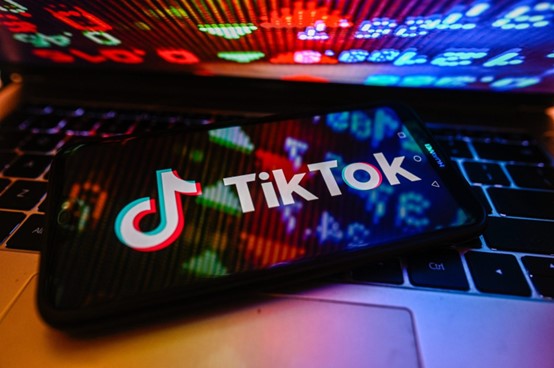
11月6日,TikTok宣布将关闭2020年启动的20亿美元创作者基金。该基金设立的目的是向平台上的热门视频创作者支付报酬。从12月16日起,如果创作者希望直接获得TikTok的报酬,他们需要加入“创意基金”,该基金仅向不短于60秒的视频的创作者支付,而超过60秒,对于该平台上的许多用户而言相当于长视频。《财富》杂志采访的创作者们表示,创作者基金的关闭,证实了他们的担忧,表明该平台并非真正重视短视频内容,而且社交内容创作职业生涯的长度也存在不确定性。
劳德代尔堡的美食与食谱社交创作者亚历克萨·桑托斯表示:“我对长期从事职业创作一直有所疑虑,因为我看不到未来。”桑托斯的TikTok账号@alexawhatsfordinner获得了1,600多万个点赞。她认为,她的热门食谱视频长度在15至20秒之间效果最佳,但为了获得TikTok创意基金的奖励资格,她不得不将视频延长到60秒以上,因为除了直播和带货以外,这是创作者目前在该平台上获得报酬的主要途径。“每当有任何变化的时候,创作者都会倍感压力;你不得不修改创作的内容,改变创作方式。”
2020年7月,TikTok设立创作者基金,规模为2亿美元。当时,该公司表示这个基金的目的是“为那些希望有机会通过创意内容维持生计的雄心勃勃的创作者们提供支持”。虽然TikTok在随后的几年中将该基金的规模扩大到20亿美元,但创作者们普遍表示,TikTok的远大计划并未实现。就连每月播放量高达数百万的创作者也表示,该基金支付的报酬微不足道。喜剧演员帕特·比托尔(TikTok账号@nomdecoom)从2021年春便被纳入了创作者基金。他说道:“靠创作者基金,显然无法维持生计。”他表示,在此期间,他的视频月均播放量为200万次,但他获得的收入总额只有“几百美元”。 “它是我们的科技霸主;他们可以随心所欲地随时切断我们的收入来源。”
被纳入创作者基金和创意基金的资格条件不变:TikTok用户的粉丝量需要超过10,000,而且过去30天的视频播放量要超过100,000次。TikTok的一位发言人对《财富》杂志表示,创作者基金的所有成员可以被自动纳入创意基金,只要他们愿意。
阿祖尔·麦克康奈尔的账号@livecomposed以分享清洁技巧的视频走红。她在约两年前加入创作者基金,共从该基金获得6,328美元收入。这相当于每个月数百万的播放量,只有约100美元收入。麦克康奈尔表示:“我记得,在最初加入[创作者基金]的时候,我想我可以靠这个赚钱。但随着内容创作事业的发展,我意识到,[创作者基金]并不足以激励我一直坚持展示和创作内容。”现在,麦克康奈尔主要在TikTok上发布她为不同品牌创作的内容,这成为她的主要收入来源。她的原生内容在其他社交平台上能获得更高收入。
失败的计划
为了向创作者提供报酬,社交媒体巨头们启动了许多计划,但这些计划都已经结束,TikTok的创作者基金也是其中之一。今年早些时候,Meta突然结束了Reels Bonus计划,而且还修改了广告收入分成计划;这两个计划启动的目的都是为了向短视频内容的创作者提供报酬。《财富》杂志曾在文章中表示,TikTok的广告收入分成计划Pulse能让创作者获得更多报酬。但之后,TikTok就悄然结束了该计划。
与此同时,YouTube和Snapchat则在向创作者慷慨付费。YouTube Shorts合作伙伴计划,直接鼓励对TikTok不再抱有幻想的创作者,包括麦克康奈尔和桑托斯等,为谷歌(Google)旗下的视频网站创作内容,而且颇有成效。Snapchat也在通过“疯狂的”变现计划,吸引德阿梅里奥姐妹和大卫·多布里克等大牌网红的时间和内容。据《财富》杂志报道,该公司的计划已经为某些网红短短几天的内容支付了高达10,000美元。
但创作者依旧将TikTok视为最有可能成为网红的平台。创作者对《财富》杂志表示,创意基金(补偿60秒以上视频的创作者)支付的报酬丰厚。目前尚不确定TikTok区分长视频与短视频报酬的原因,但有创作者怀疑,这可能与TikTok想与YouTube展开更激烈的竞争有关。喜剧创作者比托尔表示:“在过去两三个月里,我获得了第一笔比较丰厚的收入。但因为算法不一致,因此我不能说:‘我不需要其他收入来源。’”
各大平台不断变化的支付方式、变幻无常的算法和无法预测的趋势,可能意味着全职从事内容创作将变得更加困难。即使每月播放量高达数亿的创作者,依靠内容的快速传播维持生计(和作为终生职业),是否具备长期可行性,这在财务上仍难以预测。
大多数全职创作者,包括比托尔、桑托斯和麦克康奈尔等,都要靠品牌合作来维持生计。桑托斯表示:“对于我和我的大多数创作者朋友而言,维持正常生活的唯一途径是通过品牌合作,而不是创作者基金的微薄收入或者其他奖金。”(财富中文网)
翻译:刘进龙
审校:汪皓
11月6日,TikTok宣布将关闭2020年启动的20亿美元创作者基金。该基金设立的目的是向平台上的热门视频创作者支付报酬。从12月16日起,如果创作者希望直接获得TikTok的报酬,他们需要加入“创意基金”,该基金仅向不短于60秒的视频的创作者支付,而超过60秒,对于该平台上的许多用户而言相当于长视频。《财富》杂志采访的创作者们表示,创作者基金的关闭,证实了他们的担忧,表明该平台并非真正重视短视频内容,而且社交内容创作职业生涯的长度也存在不确定性。
劳德代尔堡的美食与食谱社交创作者亚历克萨·桑托斯表示:“我对长期从事职业创作一直有所疑虑,因为我看不到未来。”桑托斯的TikTok账号@alexawhatsfordinner获得了1,600多万个点赞。她认为,她的热门食谱视频长度在15至20秒之间效果最佳,但为了获得TikTok创意基金的奖励资格,她不得不将视频延长到60秒以上,因为除了直播和带货以外,这是创作者目前在该平台上获得报酬的主要途径。“每当有任何变化的时候,创作者都会倍感压力;你不得不修改创作的内容,改变创作方式。”
2020年7月,TikTok设立创作者基金,规模为2亿美元。当时,该公司表示这个基金的目的是“为那些希望有机会通过创意内容维持生计的雄心勃勃的创作者们提供支持”。虽然TikTok在随后的几年中将该基金的规模扩大到20亿美元,但创作者们普遍表示,TikTok的远大计划并未实现。就连每月播放量高达数百万的创作者也表示,该基金支付的报酬微不足道。喜剧演员帕特·比托尔(TikTok账号@nomdecoom)从2021年春便被纳入了创作者基金。他说道:“靠创作者基金,显然无法维持生计。”他表示,在此期间,他的视频月均播放量为200万次,但他获得的收入总额只有“几百美元”。 “它是我们的科技霸主;他们可以随心所欲地随时切断我们的收入来源。”
被纳入创作者基金和创意基金的资格条件不变:TikTok用户的粉丝量需要超过10,000,而且过去30天的视频播放量要超过100,000次。TikTok的一位发言人对《财富》杂志表示,创作者基金的所有成员可以被自动纳入创意基金,只要他们愿意。
阿祖尔·麦克康奈尔的账号@livecomposed以分享清洁技巧的视频走红。她在约两年前加入创作者基金,共从该基金获得6,328美元收入。这相当于每个月数百万的播放量,只有约100美元收入。麦克康奈尔表示:“我记得,在最初加入[创作者基金]的时候,我想我可以靠这个赚钱。但随着内容创作事业的发展,我意识到,[创作者基金]并不足以激励我一直坚持展示和创作内容。”现在,麦克康奈尔主要在TikTok上发布她为不同品牌创作的内容,这成为她的主要收入来源。她的原生内容在其他社交平台上能获得更高收入。
失败的计划
为了向创作者提供报酬,社交媒体巨头们启动了许多计划,但这些计划都已经结束,TikTok的创作者基金也是其中之一。今年早些时候,Meta突然结束了Reels Bonus计划,而且还修改了广告收入分成计划;这两个计划启动的目的都是为了向短视频内容的创作者提供报酬。《财富》杂志曾在文章中表示,TikTok的广告收入分成计划Pulse能让创作者获得更多报酬。但之后,TikTok就悄然结束了该计划。
与此同时,YouTube和Snapchat则在向创作者慷慨付费。YouTube Shorts合作伙伴计划,直接鼓励对TikTok不再抱有幻想的创作者,包括麦克康奈尔和桑托斯等,为谷歌(Google)旗下的视频网站创作内容,而且颇有成效。Snapchat也在通过“疯狂的”变现计划,吸引德阿梅里奥姐妹和大卫·多布里克等大牌网红的时间和内容。据《财富》杂志报道,该公司的计划已经为某些网红短短几天的内容支付了高达10,000美元。
但创作者依旧将TikTok视为最有可能成为网红的平台。创作者对《财富》杂志表示,创意基金(补偿60秒以上视频的创作者)支付的报酬丰厚。目前尚不确定TikTok区分长视频与短视频报酬的原因,但有创作者怀疑,这可能与TikTok想与YouTube展开更激烈的竞争有关。喜剧创作者比托尔表示:“在过去两三个月里,我获得了第一笔比较丰厚的收入。但因为算法不一致,因此我不能说:‘我不需要其他收入来源。’”
各大平台不断变化的支付方式、变幻无常的算法和无法预测的趋势,可能意味着全职从事内容创作将变得更加困难。即使每月播放量高达数亿的创作者,依靠内容的快速传播维持生计(和作为终生职业),是否具备长期可行性,这在财务上仍难以预测。
大多数全职创作者,包括比托尔、桑托斯和麦克康奈尔等,都要靠品牌合作来维持生计。桑托斯表示:“对于我和我的大多数创作者朋友而言,维持正常生活的唯一途径是通过品牌合作,而不是创作者基金的微薄收入或者其他奖金。”(财富中文网)
翻译:刘进龙
审校:汪皓
On November 6, TikTok announced that it will sunset the $2 billion Creator Fund, which was established in 2020 to pay creators on the platform for viral videos. Starting December 16, if creators wish to be compensated directly by TikTok, they will need to enroll in the Creativity Fund, which only pays creators for videos longer than 60 seconds—the equivalent of long-form for many on the platform. For creators interviewed by Fortune, the end of the Creator Fund validates their fears that the platform does not truly value their short-form content, and that the longevity of careers in social content creation remains uncertain.
“I’m always anxious about being a professional creator long-term, just because there’s really no line of sight into what the future holds,” says Alexa Santos, a Fort Lauderdale–based food and recipe social creator, who runs TikTok account @alexawhatsfordinner, which has over 16 million likes. She believes her viral recipe videos are best between 15 to 20 seconds in length, but is forcing herself to stretch them to 60-plus seconds for eligibility in TikTok’s Creativity Fund, as it’s now a primary way for creators to get compensated by the platform outside of live-streaming and shopping. “It’s always stressful when things change on us; you have to change what you’re doing and alternate how you’re creating content.”
When TikTok launched the Creator Fund in July of 2020 with $200 million, the company said it aimed to “support ambitious creators who are seeking opportunities to foster a livelihood through their innovative content.” Though the company increased the funding to $2 billion in the following years, creators would largely argue that TikTok’s ambition was unmet. Even creators who garnered millions of monthly views said the Fund paid paltry sums. “It became very clear early on that I was not gonna make a living off the Creator Fund,” says sketch comedian Pat Beutow (@nomdecoom on TikTok) who was part of the Creator Fund from the spring of 2021 until recently. During that time, he says his videos generated an average of 2 million views per month, but he made “a couple hundred bucks” in total. “It’s our tech overlords; they can cut it off at any point if they want.”
The eligibility for acceptance into the Creator and Creativity funds remain identical: TikTokers need over 10,000 followers and more than 100,000 video views in the last 30 days. A TikTok spokesperson told Fortune that all members of the Creator Fund will automatically be accepted into the Creativity Fund, though they need to transfer voluntarily.
Since she joined the Creator Fund about two years ago, Azure MacCannell, known for her cleaning hack videos as @livecomposed, has generated $6,328 from the Creator Fund, amounting to around $100 per month for the millions of views she generates per month. “When I started [in the Creator Fund], I remember thinking, Oh, this is something I can make money on,” says MacCannell. “But as I’ve grown in my content creating career, I realize that [the Creator Fund] is not enough incentive to show up and keep creating content all the time.” These days MacCannell mostly uses TikTok for posting videos she makes for various brands, her primary source of income. Her organic content fares better on other social platforms.
Another one bites the dust
The TikTok Creator Fund’s death is yet another headstone in the cemetery of programs launched—and ended—by the social giants to compensate creators. Earlier this year Meta abruptly ended its Reels Bonus program, and it is remodeling its ad revenue share program; both were launched to compensate creators for short-form video content. TikTok also quietly killed its ad-revenue-share program Pulse after Fortune wrote about it paying mere pennies to creators.
Meanwhile, YouTube and Snapchat have doubled down on paying creators. YouTube Shorts Partner Program is a direct play to incentivize disenchanted TikTokers like MacCannell and Santos to create content for the Google-owned video site, and it’s going fairly well. Snapchat has also made a play to capture time and content from top creators like the D’Amelio sisters and David Dobrik with its “insane” monetization program that has paid some creators upwards of $10,000 for a couple of days of posts, reports Fortune.
Still, TikTok is regarded among creators as the best platform to find viral success. And creators tell Fortune that the Creativity Fund, its initiative to compensate creators for videos over 60 seconds, is paying out meaningful sums. It’s not clear why the payouts for longer videos are so different than those for short videos have been, though some creators suspect it’s related to TikTok’s ambition to escalate competition with YouTube. “It has been a helpful chunk of change—for the first time—as of the last two or three months,” says comedy creator Beutow. “But because of the inconsistency of the algorithm, it’s not enough to say, ‘Oh, I don’t need other methods of income.’”
The ever-changing payment schemes by the platforms, fickle algorithms, and unpredictable trends may mean that being a full-time content creator is harder than ever. Even for creators who are amassing hundreds of millions of views per month, the long-term viability of life (and death) by virality remains financially unpredictable.
Most full-time creators—Beutow, Santos, and MacCannell included—rely on brand deals to stay afloat. “For me and the majority of my creator friends, having the brand partnerships is the only way that we’re able to make a legit living off [creating] versus just scraping together crumbs of Creator Fund this or bonuses that,” says Santos.






